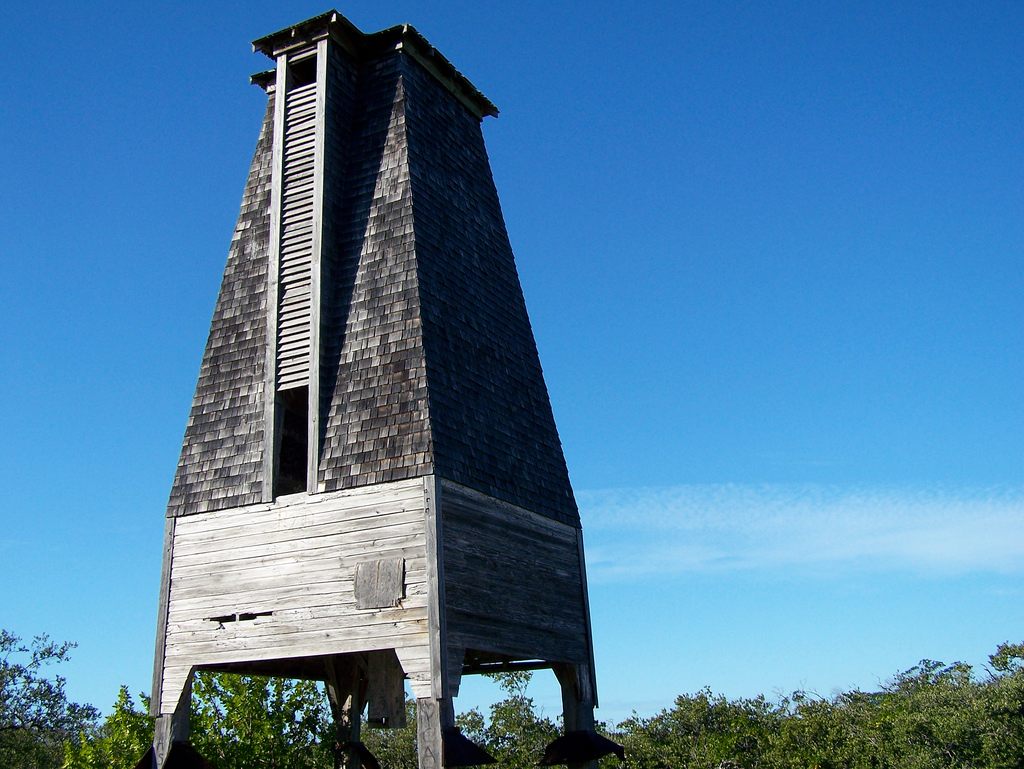If Bats Are Bothering You, Build Them a Dream House

University of Florida’s Bat House and Barn (Used with permission from Florida Museum of Natural History. Photo by Kristen Grace.)
Bats like caves—but they’ll take a stadium, if it’s available. And that’s a problem at Texas A&M, where bats have colonized the university’s Kyle Field. As the Texas Tribune reports, the stadium had declared itself “bat-friendly” but football fans weren’t exactly enjoying the sight or scent of guano on the walls, ground and concession stands. The university has tried to evict the bats from the stadium, causing them to take up residence elsewhere on campus (currently, they’re getting comfortable in the swimming pool building). By preventing the bats from nesting, though, the university could end up killing thousands of animals, an outcome that no one wants.
One potential solution that could benefit both bats and people? Build them their own bespoke bat housing.
“In the case of Texas A&M, what they did incorrectly is that they did not build large artificial roosts in advance of excluding the bats from the stadium,” says Dianne Odegard, education and public outreach manager at Bats Conservation International.
Making homes for bats, though, has been a design problem for humans ever since we began trying to construct artificial caves in the early 20th century. About 20 years ago, when University of Florida faced a similar problem, the school attempted to house its own displaced winged tenants. Now, the Gainesville campus is home to what the university says is the world’s largest artificial bat house. These are Brazilian free-tailed bats, and they like roosting in places like attics, stadiums, or in narrows spaces between buildings. The Florida colony is estimated to have grown to 300,000. (That’s about 6 bats for every UF student.) These bats have the option of settling in either the Bat House or the Bat Barn—seen above— and there’s plenty of room for the colony to expand: the university thinks it can house up to 750,000 bats.
Here’s what the scene looks like inside:
Once, the bats lived in fancier digs, in one of UF’s historic buildings. But after renovations started in the late ’80s, they decamped to university’s stadium, where, as in College Station, they became something of a nuisance for football fans. In 1991, UF’s athletic department decided to invest $30,000 in creating a more permanent, less problematic home for the colony, as the Sun-Sentinel reported at the time. To lure the bats into the newly built Bat House, the university piled bat guano inside, to make it smell like home to the colony.
It took the bats about four years to move permanently into UF’s first Bat House. As tenants, bats can be hard to attract, as Charles Campbell found out in the early 20th century. Campbell wanted to build mass bat housing in order to combat malaria, on the theory that bats would eat mosquitos. As BATS magazine wrote in 1989, he assumed it wouldn’t be too difficult to create suitable bat housing.
“Can bats like bees be colonized and made to multiply where we want them?” he wondered. “This would be no feat at all!…Don’t they just live in any old ramshackle building? They would be only too glad to have a little home such as we provide for our song birds…”
But as Campbell discovered, it wasn’t that easy. His first bat tower, in San Antonio, failed. It took him about a decade to develop one that worked. His second bat tower, which he built 10 miles south of the city, at Mitchell’s Lake, attracted a bat colony big enough that by the 1920s, people used to gather in the evenings to watch the bats emerge, BATS writes.
Even that success, though, wasn’t a true breakthrough in bat housing. When a Florida developer, Richter Clyde Perky, used Campbell’s design to build a bat tower on Sugar Loaf Key, the bats never moved in—it’s still standing today, and still empty of bats.

The Sugar Loaf Key Bat Tower (Flickr user doneille, CC-BY-SA 2.0)
Since Campbell’s day, though, designers have had better luck building houses that bats actually like. Not all species will live in bat houses to begin with, but for those that will, BCI’s Odegard says that, in general, bat houses need to be at least 12 feet off the ground, near a source of water, and warm enough to keep the bats cozy. (Usually, that means it needs to be in a sunny spot.) A house with multiple chambers will also help keep bats happy, by creating microclimates that can warm or cool the bats, depending on their needs.
Get all this right, and it’s possible to make a place that bats will want to call home. (Although, says Odegard, there’s no guarantee.) In London, it only took weeks for bats to move into the Berkeley Bat House after it was built in 2009 — and they’re still happily living there on what looks like very pleasant pond.



















Follow us on Twitter to get the latest on the world's hidden wonders.
Like us on Facebook to get the latest on the world's hidden wonders.
Follow us on Twitter Like us on Facebook